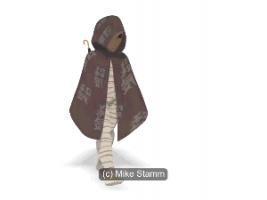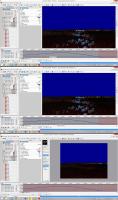-
Posts
21,649 -
Joined
-
Last visited
-
Days Won
119
Content Type
Profiles
Forums
Events
Everything posted by Rodney
-
Spiffy! I like.
-
My kind of short film... [vimeo]93537717[/vimeo] Direct Link to Vimeo video This is Toniko Pantoja’s fourth year project at Cal Arts. See more via Toniko's blog. His first year film is impressive as well: Link
-
I'm not seeing any of this strangeness BUT I'm operating on Win 8.1 with non-nVidea graphics card. I think you'll have to open a new report because those designated solved probably don't allow you to add/edit. Reference the old report where appropriate.
-
Happy Birthday Jeffrey! Hope you are soon in top shape again soon. We miss you!
-
Perhaps the two entries could receive something for taking the time to enter. Those of us that didn't enter wouldn't need to know what that something was. Folks' schedules appeared to be full this time around with school (finals!) and other project deadlines.
-
Happy Birthday! (and many thanks for helping to make A:M what it is today!)
-
Here's a video that is making the rounds. There is nothing particularly new represented here but it's a very nice and concise (even entertaining) look at the 12 principles of animation as outlined in Johnston and Thomas's book 'Disney's Illusion of Life. [vimeo]93206523[/vimeo] Direct link to video on Vimeo Note that at the end of the video there is a link to a tumblr site that doesn't appear to work. The correct address (that links to a webpage where each of the principles/examples is separated) is: http://the12principles.tumblr.com/
-
I had some success with this but it wasn't a straightforward approach. In the end I decided to forego the Flatten/Pose method and either: 1. Simply Snapshot and reapply it in the Modeling window allowing for any difference in the application of the SnapShot onto the unflattened model. 2. Flatten the model in the Z axis of the Model itself and then expand it back after applying the snapshot. Note: Scaling to 1 on the Z axis works well but returning the model to its original scale isn't as simple as typing 100% back into the z scale. Also, I believe this scaling has to happen in a New Group as it might not work in the model itself. I'll have to refresh my memory here but to answer your question... no, the Apply Snapshot option does not appear in the Right Click menu in the Pose window to allow us to reapply the Snapshot.
-
One occassionally wonders what might have been... or ebon... Happy Birthday Mike! (Best of luckbat on your current endeavors)
-
Elm everyone knows from Soulcage fame. Eric Camden from . Hope you both have a very happy birthday!
-
Heck, a few folks might purchase just to get the cool drop cards. Make 'em awesome k? Great idea.
-
Yes, I was using SSAO... well... I was for that last toon rendering. AO itself was never turned on/used (except in the Chor setting where IBL is set... but not the render panel... and not in the camera ) Added: There is ambiance all over this project... from the surfaces themselves to the material effector that is constrained to the camera) one of my initial tests with this setup was to light a scene with no lights in the scene... interesting stuff there for sure. Here's an interesting rendering. I tweaked the raw rendering with some HSE and Filmgrain in A:M Composite and colors suddenly turned into interesting lights in the distance and square buildings took on the look of vegetation (I'm talking about right at the initial intro). filmgrain.mov
-
Looking very good! Now you've got me intrigued about each of those scenes.
-
Hmmm.... As with most anomolies this is probably more of a matter of workflow than anything else. Still, it does beg a few question such as, "How does one reduce the variables between all rendering options. (answer: one does not) I would be hard pressed to draw out a schematic of what the rendering options and branching opportunities are but at the core is the difference between (Render using this dialogue) and (Use Camera Settings). Where possible I have tried to use camera settings rather than A:M overwriting via render dialogue. This is somewhat problematic however because upon each new install or reset of A:M (I believe) A:M resets to 'This Dialogue'. If we were to track the decision points one must take to repeat any given render (similar to your benchmarking oversight that made you wonder what might be wrong with your new computer) it might surprise us just how many variables would surface. It's great to have endless possibilities in rendering but sometime I yearn for the ultimate simplicity of one single solitary (perhaps even boring) result. It seems that I need to pick one general workflow and stick with it. No? Not that this is very insightful but attached are three images that represent (Shift Q) (Q) and Final Render (I think... I thought one was just a regular capture of the screen without any rendering other than what shows up in the Chor (that 'unrendered look' which I refer to as 'real time' is the look I generally prefer). Unless I made a mistake I'd say that the Shift Q and Q renders look almost exactly the same but the final render picks up some additional (red) lighting or ambiance from somewhere. I wouldn't waste time trying to resolve anything here as I tweaked too many settings while testing to make a decent test case out of this one. I'd need to go back to a setup with considerably fewer variables. Disclaimer: I have never understood the differences between the various render option in A:M so take that into consideration when trying to clue me in.
-
I left this rendering when I left home this morning and I kind of like the look. It's toon rendered with SSAO. I wasn't even sure if that was going to work... The effect is a bit noisy on the cubes and the random lighting adds strange shadows but it was an interesting test. I'll have to check but I think the noise is a side effect of a material effect constrained to the camera. Added: Something that remains a bit elusive is that I often see a look in realtime view that I'd like to get in final rendering but the only way I can seem to to capture that is to screen capture the playback in the working window. It is often that look in the realtime window that makes me think (Aha! That's exactly the look I want!) only to end up with a different look after rendering out the shot. What I've posted here is definitely not that look. cityscape_toon.mov
-
Here's a proof of concept test of a cityscape cobbled together quickly with copies of a single nondescript cube. The basic idea being to later replace that cube with a fully poseable master building capable of showing a variety of different details and facades. Similar variables might control details outside the building such as lampposts/lights etc. There are a few assumptions here: - Detail would (optimally) only be created where the camera needs to go (This might be directed through hot/active and cold/inactive zones) - Streets and sidewalks would be created after the primary city is generated and approved for detailing (conversely the building could be created after the primary streets if vehicular POV is the goal) - Locking in cardinal directions would be useful in generating various lighting conditions (morning, noon, dusk, dawn, etc.) - The texturing phase would be a final pass over the details created with variations on the master building (the majority of buildings would all be decaled with a single stamp) - Space would be reserved/created for the hero buildings and important details modeled separately - Specific locations identified in the script would be tailored to augment the shots (more/less detail, lighting, blurring, etc.) cityscape004.mov
-
Awesome news Ernest. Congratulations!
-
The last two art tips by Aaron Blaise deal with tone and color. When lighting and texturing models these basic concepts of tone and temperature are very important stuff. RtJlyN7A6Ho VH6bhA7QP9I In the last video Aaron mentions a website that prints 3D/animated/lenticular products (buesiness cards etc.) that might be of interest to some: The site: http://www.snapilypro.com/
-
This (mirroring) is such a useful concept for modeling, rigging and animation that I thought I'd put together a quick video to demo the process of mirroring and saving out an Action. Nothing fancy here... just a cancan dance mirrored by scaling as Robert suggested (the model being scaled -100 in the X axis producing a quickly mirrored Action that can be saved for later usage.) Note that this is in an Action... but only because I wanted to export/save the mirrored Action. If not I might just flip the Action in the Chor and called it a day. I distinctly recall the first time someone clued me in to mirroring via scale in a Choreography and I was considerably impressed that such an easy and straightforward solution was available. Prior to that I had thought of Scale as only useful for making things bigger or smaller. Go figure. MirrorAction.mp4
-
Nicely done! You are already off and running.
-
Dhar is a machine (in the best human implementation of such things). He sets a goal and drives toward it with enthusiasm and determination until that goal is reached. Happy Birthday Dhar! We miss you here in the forum!
-
It's a very sad statement to say but IE remains largely unuseable. A couple years ago you couldn't get me to NOT use IE. Now I can't use it. It's too painful. It was even more painful to see Microsoft systematically take apart what use to be the best browser in the world. I've standardized on Chrome for the past few years but have Firefox readily available if I ever need to extend the browser via plugins. I try to keep Chrome plugin free to maintain a fast and smooth online workflow.
-
I'm hoping it's you. Congrats on the new rig!
-
I enjoyed this interview more than Ed's book. There are aspects of Ed's approach that I resist which may be what makes what he says all the more compelling to me (i.e. I want to better understand what he is saying). I was tempted to post what I considered the highlights of the interview and may still do that if there is interest. Dorthe Eickelberg's piece I was a little less interested in because her course seems more like a series of team building exercises. That isn't a negative critique of her course... it's just my shorthand way of surveying it. I like the way you think. Perhaps that might be a legitimate way to republish some of the excellent resources we have avaliable to us these days. Kind of like 'The 11 Second Club'... for animation education purposes... on steroids.











